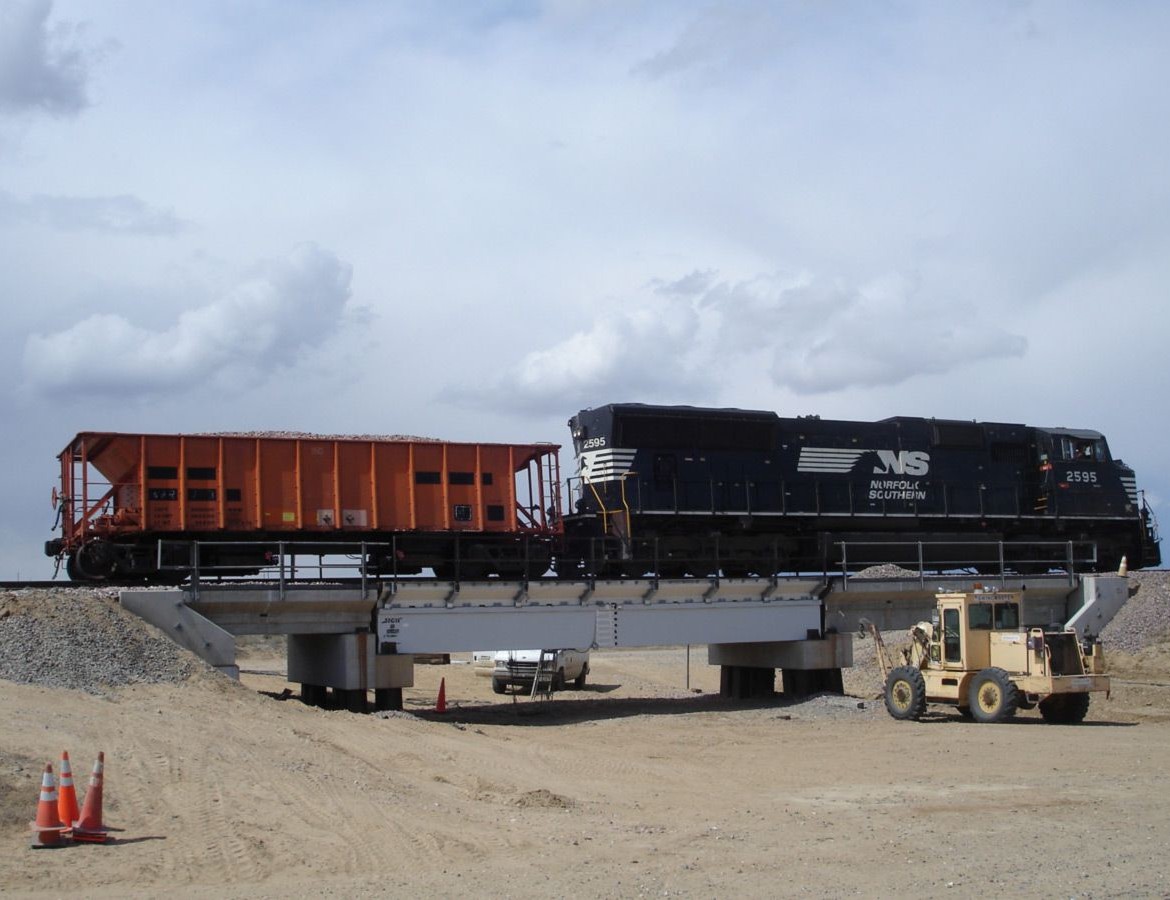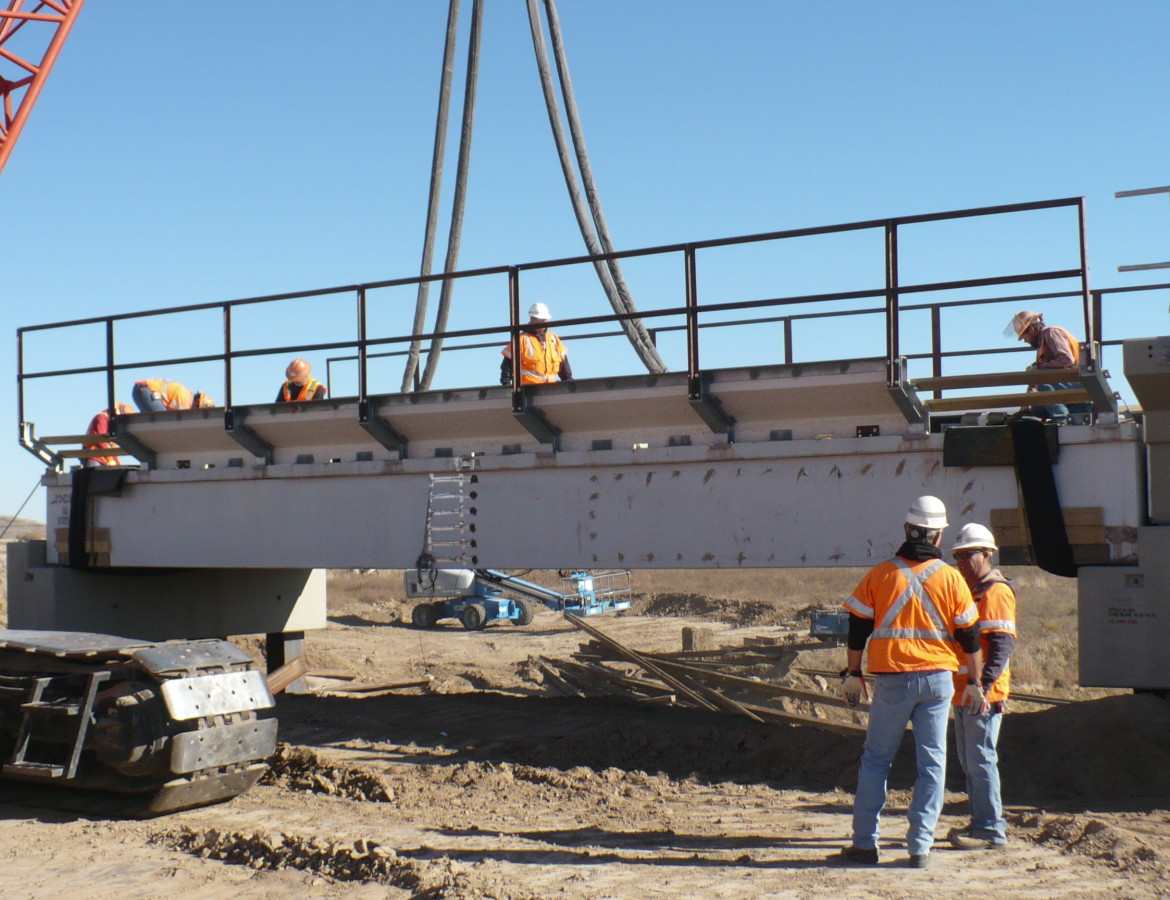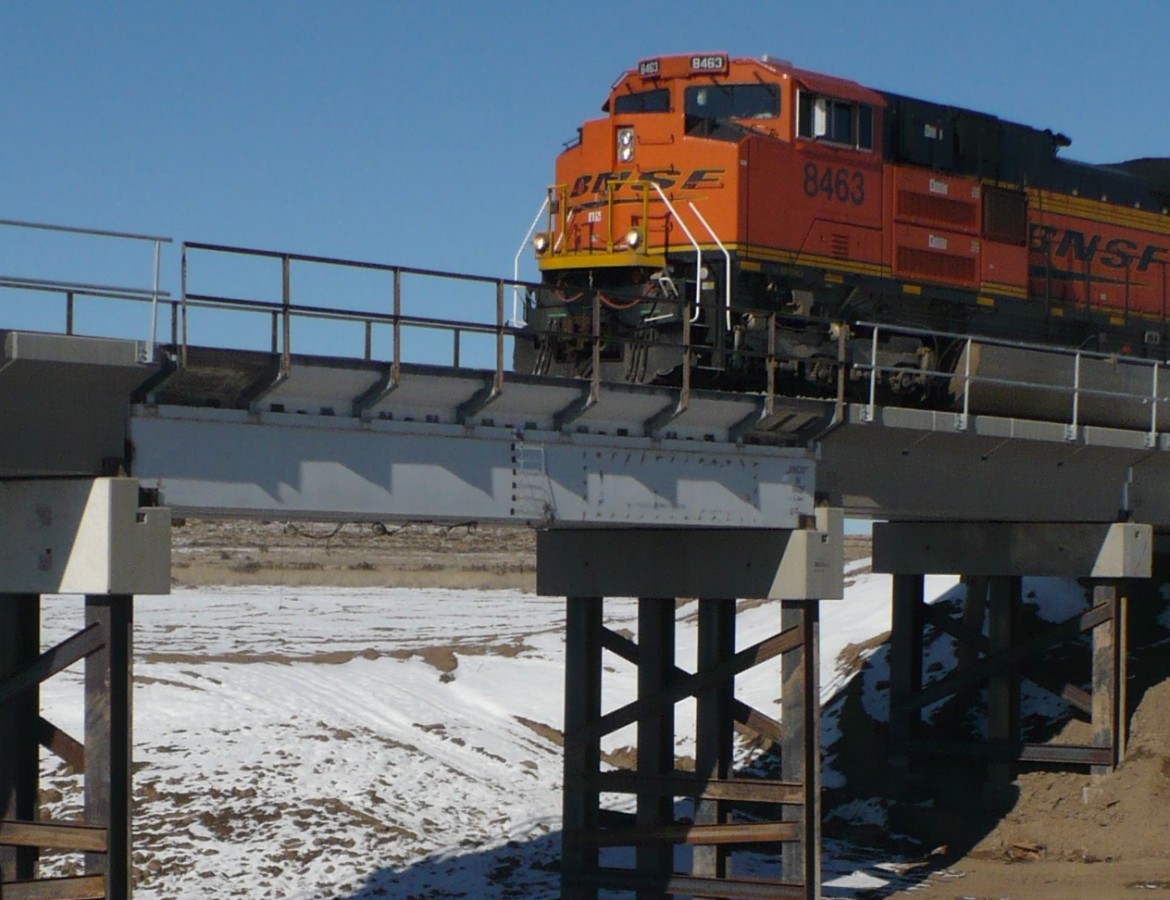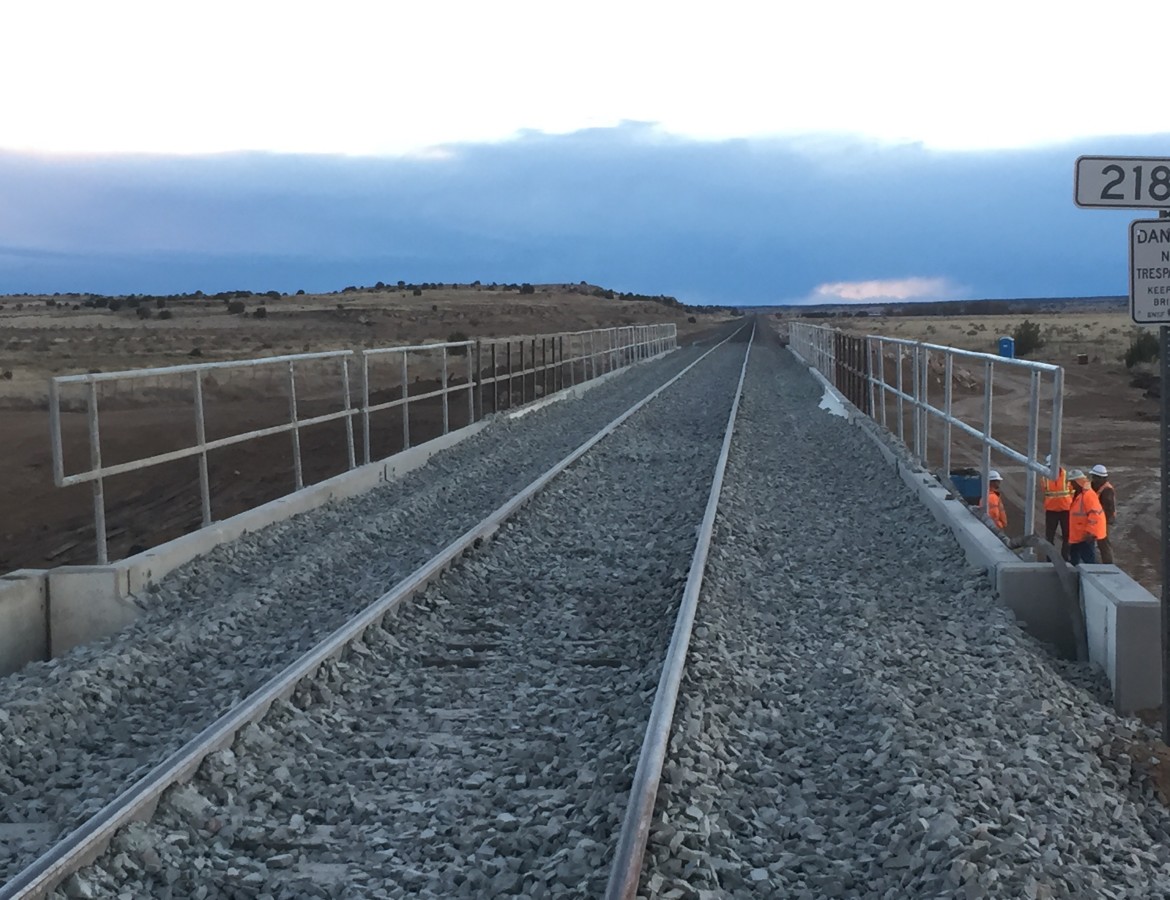





The Class 1 railroads of North America still own and maintain miles of old timber trestles that are in dire need of replacement. Since the trestles are typically located at sites that can only be accessed by rail, these bridges have to be replaced using rail-mounted, locomotive cranes.
Further, revenue service dictates very short windows for the bridge crews to access the site, remove the old bridge, install the new bridge and return it to service. Railroad bridge engineers developed methods of Accelerated Bridge Construction (ABC) to meet all of these requirements using conventional materials. Similarly, Hillman Composite Beams (HCB®s) provide bridges that meet all of the restrictive demands placed on getting a railroad bridge replaced quickly with a longer-lasting solution.
As a leader in railroad bridge technology, BNSF Railway recognized early on that the success of HCB bridge technology would lend tremendous value to its infrastructure assets. Most of the century-old timber trestles consisted of short spans of 12 to 15 feet. In recent years, railroads have replaced these timber trestles with concrete spans up to 30 feet long to reduce the number of new pile bents. The 30-foot constraint was driven by the setting capacity of the locomotive cranes. The bridge engineers of BNSF worked closely with HCB Inc. to develop a standardized bridge section that would allow for replacing these trestles with spans greater than 30 feet and up to 45 feet with the same equipment. The longer span also reduces the number of pile bents to be constructed in the limited track blocks. As a result, up to 50-percent more bridge with 50-percent fewer pile bents can be constructed in the same time frame.
In March 2011, bridge crews placed two prefabricated HCB units measuring 42 feet long and 7 feet wide, including deck and ballast curbs, on the HTL (High Tonnage Loop) at Transportation Technology Center Inc. in Pueblo, Colorado. Over the next two years, this span was subjected to more than 244 million gross tons (MGT) of heavy-axle Class 1 traffic with no degradation in performance.
This extensive testing has validated the durability of HCB as a value-added railroad bridge technology. In October 2015, BNSF crews installed the HCB Bridge on a revenue-service line in southeastern Colorado.
Project Specs:
HCB Piece Weight
Owner: BNSF Railway
Contractor: BNSF Railway
Completion date: March 2011 (testing), 2015 (revenue service)
Project Sheet: Click here for downloadable PDF version